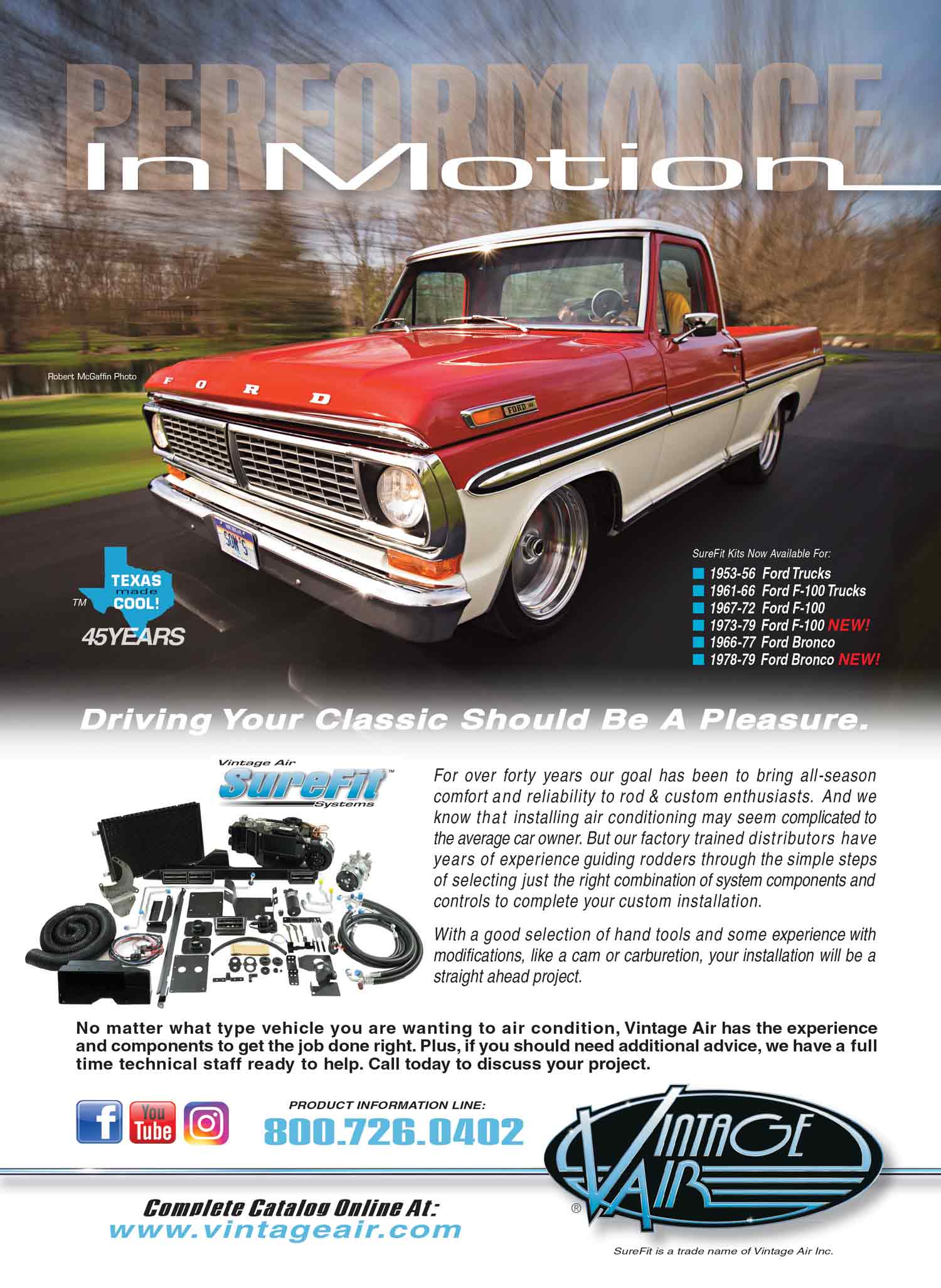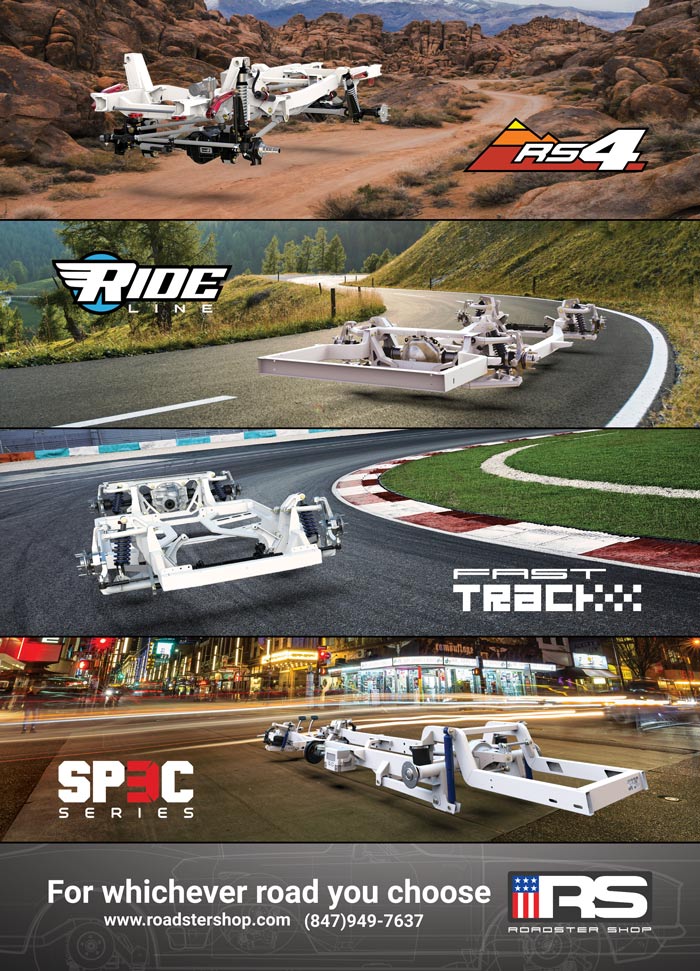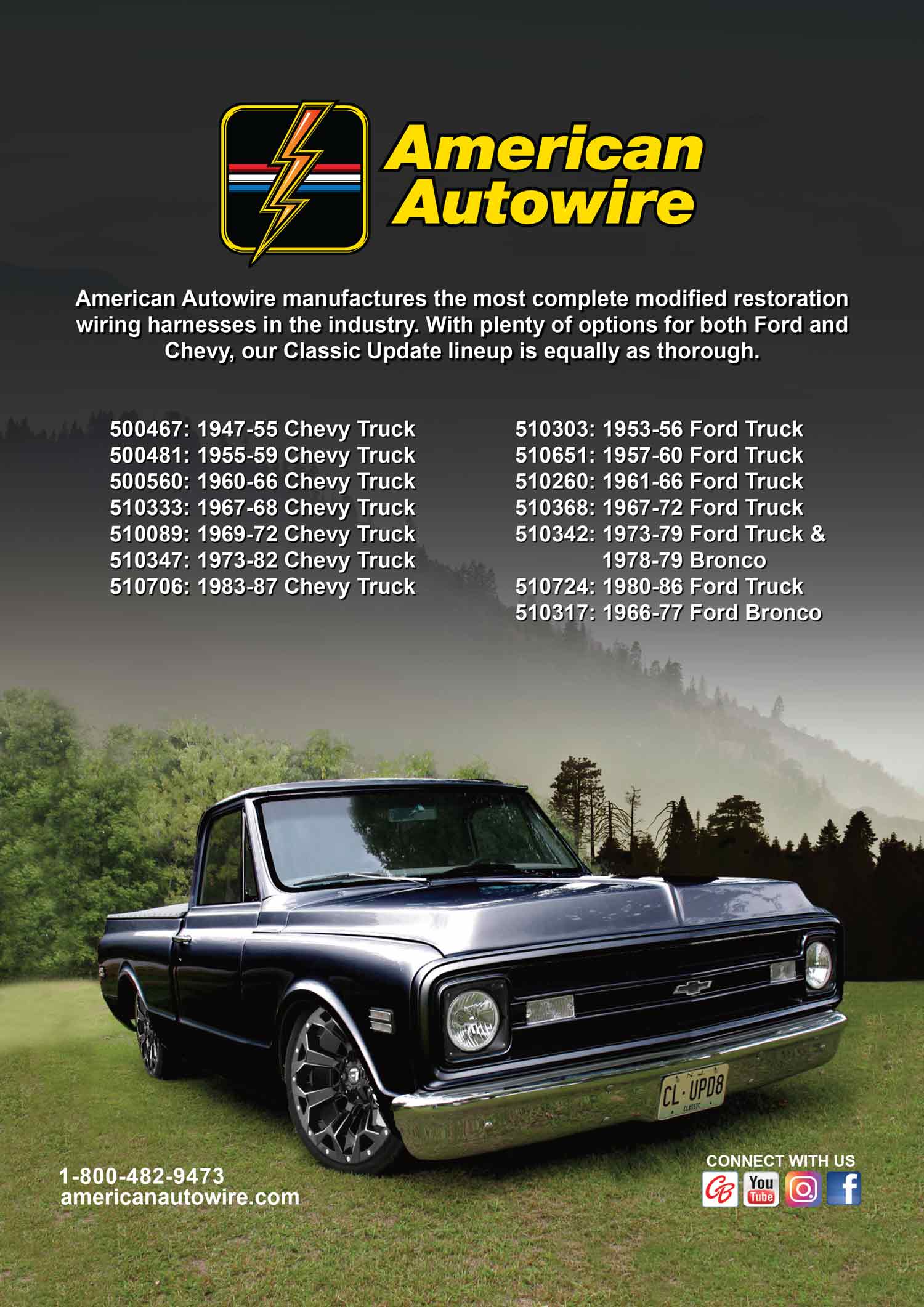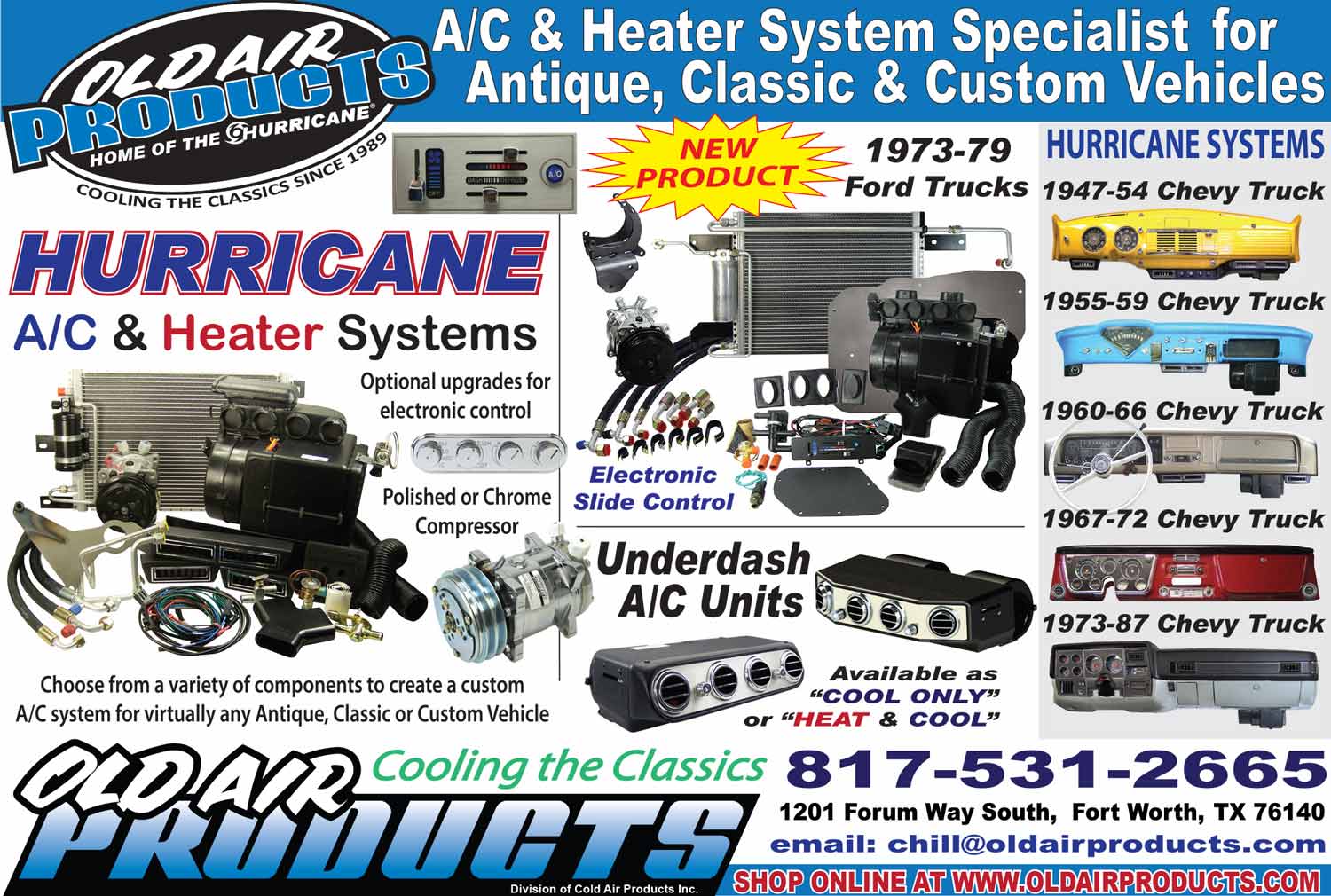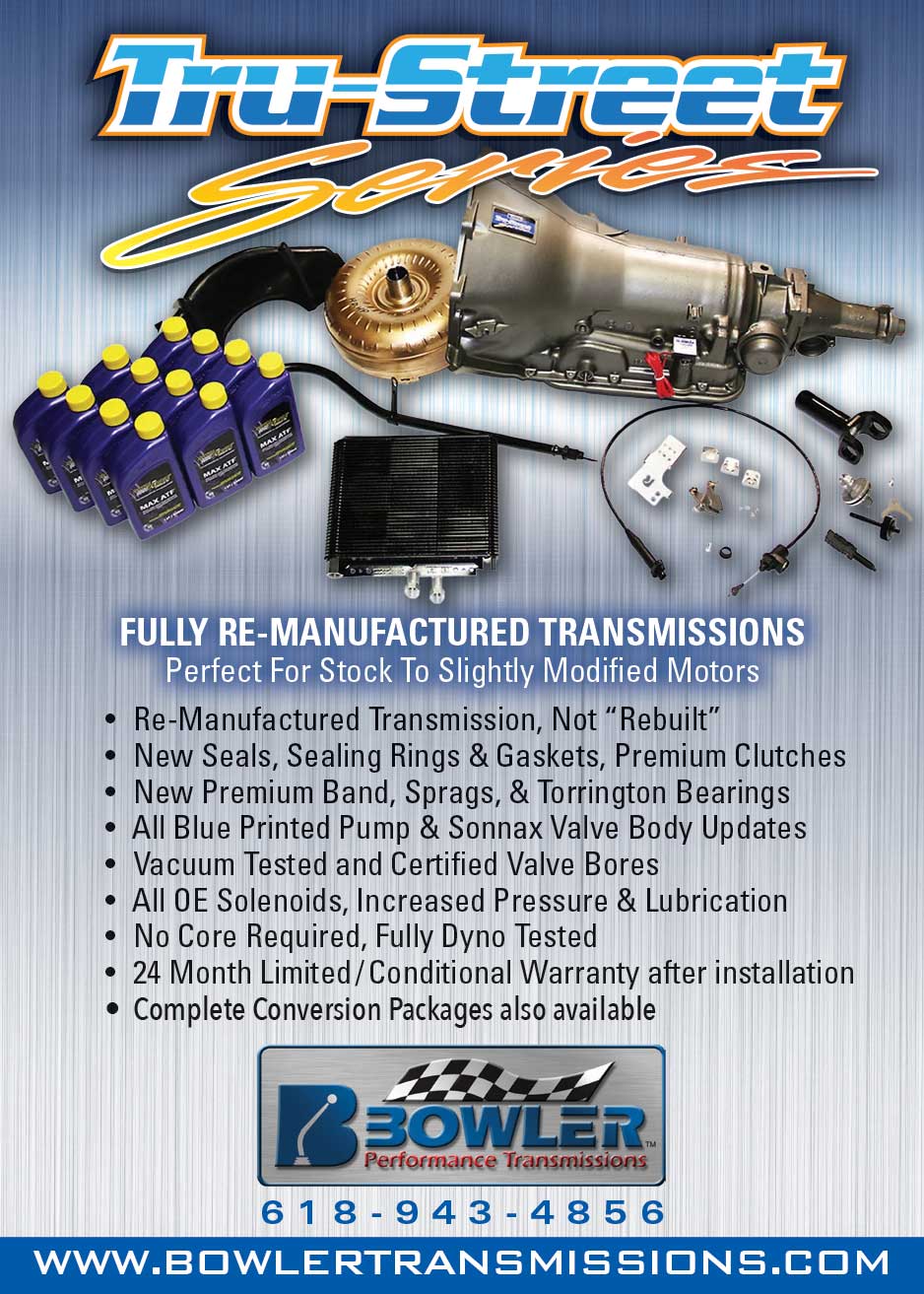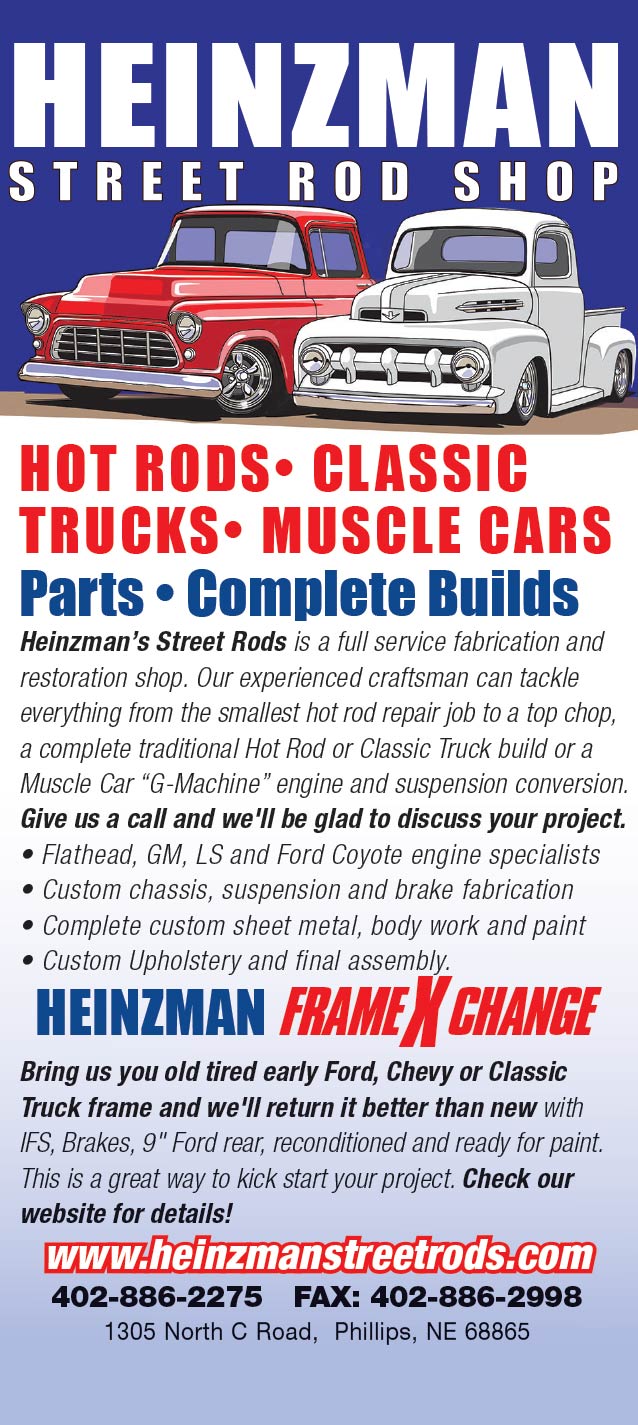
 TOC
TOC Feature of the Month
Feature of the Month

ROB MUNOZ
Rodney Bauman, Tommy Lee Byrd, Ron Ceridono, Michael Christensen, Ron Covell, Grant Cox, Dominic Damato, John Drummond, Fuelish Media, Eric Geisert, Joe Greeves, John Jackson, Barry Kluczyk, Scotty Lachenauer, Ryan Manson, Josh Mishler, Todd Ryden, Jason Scudelleri, Chris Shelton, Tim Sutton, Chuck Vranas, Michael Yamada – Writers and Photographers
ClassicTruckPerformance.com
ModernRodding.com
AllChevyPerformance.com
InTheGarageMedia.com
Mark Dewey National Sales Manager
Patrick Walsh Sales Representative
Travis Weeks Sales Representative
ads@inthegaragemedia.com
Editorial contributions are welcomed but editors recommend that contributors query first. Contribution inquiries should first be emailed to info@inthegaragemedia.com. Do not mail via USPS as we assume no responsibility for loss or damage thereto. IN THE GARAGE MEDIA reserves the right to use material at its discretion, and we reserve the right to edit material to meet our requirements. Upon publication, payment will be made at our current rate, and that said, payment will cover author’s and contributor’s rights of the contribution. Contributors’ act of emailing contribution shall constitute and express warranty that material is original and no infringement on the rights of others.

PRINTED IN THE USA.
Classic Truck Performance is changing our “issue number” system to be a consecutive numbering system. Starting with this issue, you will see a growing issue number that will carryover into each new year (in this issue #9, as this is the ninth issue of Classic Truck Performance) rather than the previous format (#5 to match the fifth month of May).

 Still Hammerin’
Still Hammerin’‘ve always preached—and will continue doing so as long as I have this literary pulpit in which to do so—that we all need to do whatever it takes to keep the next generation(s) involved in the hobby … and at the very least involved with cars/trucks in some facet or another other than just knowing how to drive them! I truly think it’s important for us to instill the perspective that these vehicles we all love so dearly are much more than simply modes of transportation—that is, if they even have any interest in them to begin with.

 Parts Dept
Parts Dept
Like the other Force Fuel Systems, the Mini is fed through a low-pressure mechanical (or electric) pump, saving the need to modify the entire fuel system. The reservoir of the Mini is equipped with an efficient 255-lph pump and internal regulator to provide a consistent 58 psi of fuel pressure for your EFI system.

 Feature
Feature
 PHOTOGRAPHY BY TIM SUTTON
PHOTOGRAPHY BY TIM SUTTONrobably one of the last things any of us ever really thinks about when starting or even in the middle of a truck build is the question of what would happen if we were not able to see it through completion—not for reasons of financial hardship, rather, for reasons of poor health. But, as much as we hate to hear about stories as such, they do happen.
 FEATURE OF THE MONTH SPONSORED BY OPTIMA BATTERIES
FEATURE OF THE MONTH SPONSORED BY OPTIMA BATTERIES
 Feature
Feature
 PHOTOGRAPHY BY TIM SUTTON
PHOTOGRAPHY BY TIM SUTTONrobably one of the last things any of us ever really thinks about when starting or even in the middle of a truck build is the question of what would happen if we were not able to see it through completion—not for reasons of financial hardship, rather, for reasons of poor health. But, as much as we hate to hear about stories as such, they do happen.

 FEATURE OF THE MONTH SPONSORED BY OPTIMA BATTERIES
FEATURE OF THE MONTH SPONSORED BY OPTIMA BATTERIES
 Tech
Tech Photography BY The Author
Photography BY The AuthorQuick Turn
hen thinking of how your truck handles, the first components that come to mind are likely suspension parts. New shocks or coilovers, control arms or sway bars, all have a direct effect on the handling prowess of your truck; however, there’s another important part to consider: the steering.
Your truck’s steering capabilities are a huge part in not only the handling but also its overall driving characteristics and safety. To be honest, we didn’t put much thought into what a difference the steering performance can make to a truck until we upgraded our original steering box with a new quick-ratio box from Borgeson Universal Company. The quicker-turning ratio is definitely a benefit, but the overall steering feel is now tighter and delivers improved control and feel while driving.

 FEATURE
FEATURE
 Photography BY The Author
Photography BY The Authorot rod builder Mike Swaney didn’t think twice about gifting his 14-year-old son Brad with the rusty 1971 Chevy C10 he had lying around, as well as the cruddy pile of parts that went with it. It had sat dormant for way too many years and he just figured his mechanically competent teenager could throw it all back together for some basic transportation. Even good ol’ Pop would have a hard time believing what the very needy pickup would metamorphosize into under the direction of his talented son.

 Tech
Tech
 Photography BY The Author
Photography BY The Authorou get what you pay for.” We’ve heard that before. It’s generally true, and by now we ought to know that penny-pinching can be costly. In this particular instance, however, Kalispell, Montana’s Colten Hart wasn’t exactly pinchin’ pennies when he ordered up door seals from Brand-X online.

 Tech
Tech

 Photography BY The Author
Photography BY The Authorou get what you pay for.” We’ve heard that before. It’s generally true, and by now we ought to know that penny-pinching can be costly. In this particular instance, however, Kalispell, Montana’s Colten Hart wasn’t exactly pinchin’ pennies when he ordered up door seals from Brand-X online.

 Feature
FeatureBY Rob Fortier  PHOTOGRAPHY BY Josh Mishler
PHOTOGRAPHY BY Josh Mishler


hile my father’s influence on me was mainly through racing (local dirt track/stock car, NASCAR, and off-road), he was still pivotal in my becoming the “autoholic” that I am today. Given the chance over again, as there were many opportunities looking back, I’d have built a car or truck for him to enjoy before he died, which wasn’t until he was the ripe old age of 94.

 Tech
Tech Photography BY The Author
Photography BY The Authorolling through the years of classic truck innovations, each decade can claim an endless score of achievements as their products went from the drawing boards to the assembly line. It’s easy to see that Chevrolet raised the bar from 1941-1946 with their Art Deco Series of trucks showcasing design elements never seen before. From the alluring horizontal- and vertical-styled grille to the flowing headlights that melted into the fenders and distinct crank-out V-shaped windshield, these era-defining looks made them truly memorable.

 Feature
Feature
 Photography By THE AUTHOR
Photography By THE AUTHORaking on the full build of any classic truck is a journey, allowing each owner to establish a game plan of priorities to follow as they get started. Regardless of whether it’s a home build or one involving concept designs and a pro shop, it’s one best taken on with plenty of research done and enough insight to try and set a timeline to accomplish each particular step. Now, imagine setting the particular goal of competing for the coveted Don Ridler Memorial Award at the Detroit Autorama to showcase the debut of your build and you’ve just raised the bar to the highest level in the custom car world. It’s a feat that demands an incredible amount of perseverance when trying to reach the goal, especially if you’re determined to do it in only 300 days. Steve Bloom of Thornhill, Ontario, Canada, met that objective, creating the alluring 1955 Ford F-100 laid out across our pages and, of course, there’s an amazing story to tell.
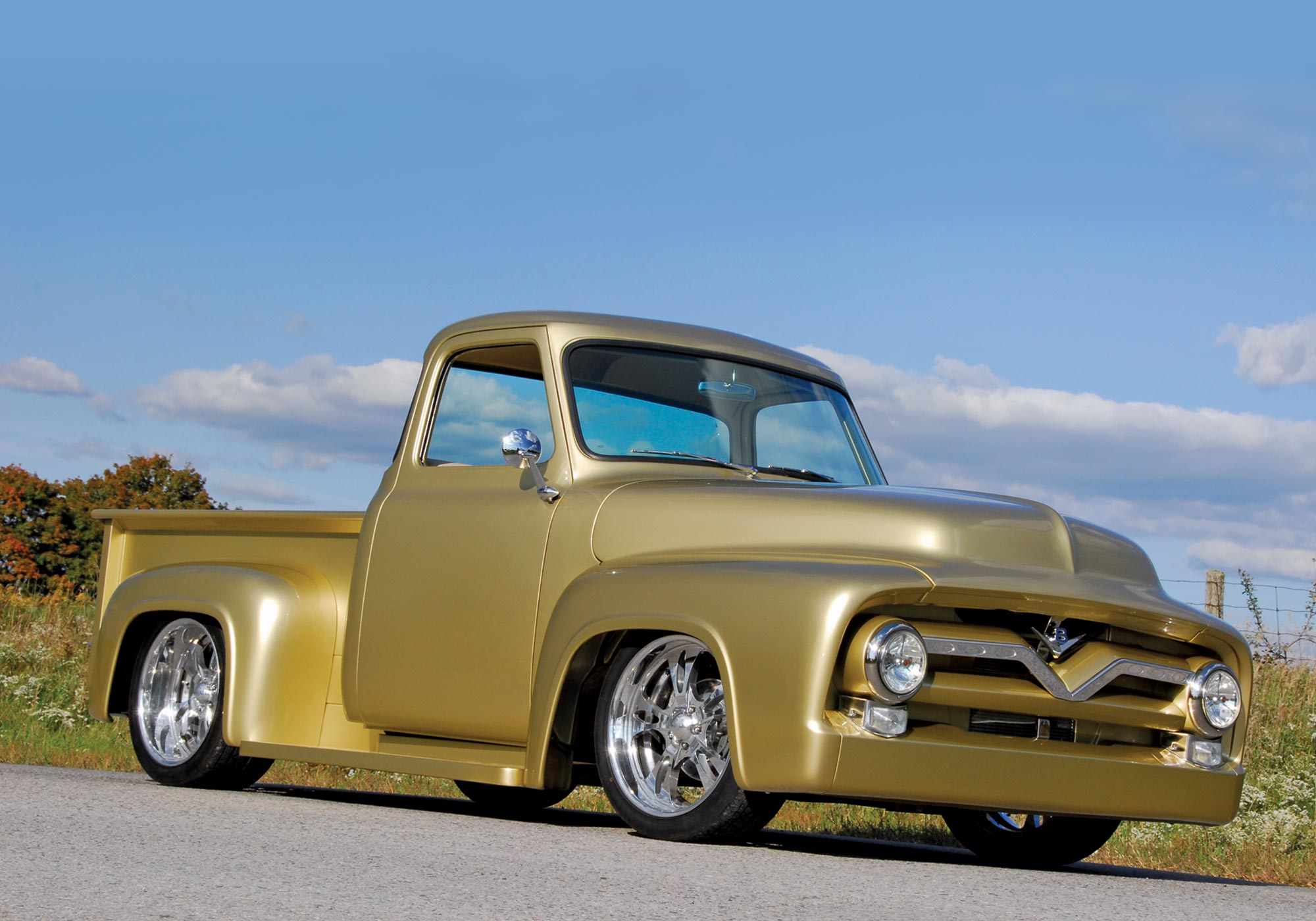

 TECH
TECH Photography By THE AUTHOR
Photography By THE AUTHORt won’t be long before the word “radio” will have no relevance whatsoever with late-model trucks—if that’s not already the case. But when it comes to the classics we deal with—at least those manufactured from the late ’40s on up—it’s almost uncommon not to find one with a factory radio … or at least the carnage of what was once accommodations for a radio in the dash!
It’s the last statement that many of us find ourselves dealing with—that being a dash butchered up at some point or another in an effort to fit a “non-stock” radio—and oftentimes in a not-so-pleasant manner if the end result is to ultimately put a stock-type radio back in service.

 Feature
Feature Photography by The Author
Photography by The Author
efinition of brainbuilding: the designing or constructing of something (perhaps an old pickup) within one’s brain. Some old pickups are built in professional shops, some are built in residential garages, while others are built beneath shade trees, and so on. Now ordinarily, they’ve got one thing in common: They’ve been brainbuilt first.
No doubt, our word du jour will catch on with copyrighting copycats who’ll make it all their own. Let’s use it while we can to kickstart this story, following a brief introduction to the head of this operation’s brainbuilding department.

 IN THE SHOP
IN THE SHOP
 Photography by The Author
Photography by The Author paid a visit to Jimenez Bros. Customs (the aftermarket suspension manufacturing half of the Jimenez Bros. based in Riverside, California) the other day to catch up on things and see how business has been treating Cain Jimenez amidst the COVID-19 shutdown, among other things.
paid a visit to Jimenez Bros. Customs (the aftermarket suspension manufacturing half of the Jimenez Bros. based in Riverside, California) the other day to catch up on things and see how business has been treating Cain Jimenez amidst the COVID-19 shutdown, among other things.
Back in 1999, Cain and his brother, Job, broke off from their lucrative careers in the collision repair business to launch their own custom paint and body shop, aptly named Jimenez Bros. Customs (or JBC for short) by their peers since that’s exactly what it was—two brothers doing custom work—as they never bothered to come up with a moniker to begin with! A few years in, after having dealt with a variety of different aftermarket suspension options for the wide variety of vehicles JBC was now building from the ground up, they took the next step and began developing their own custom suspensions, starting with the trailing arm–derived two-link JBC is now well known for. (Ironically, it was based off my own 1947 Chevy Fleetline—a Rod & Custom magazine project—that JBC developed the very first two-link kit … and that very same experimental chassis now resides under our very own Tim Sutton’s 1947 Chevy custom!)
Ad Index
- American Autowire71
- American Legend Wheels77
- Art Morrison Enterprises53
- Auto Metal Direct59
- Automotive Racing Parts7
- BedWood and Parts87
- Bowler Performance Transmissions91
- Brothers Truck Parts100
- Chevs of the 40’s79
- Classic Industries31
- Classic Instruments11
- Classic Performance Products4-5, 87
- Cleantools64-65
- Dakota Digital99
- Duralast29
- Dynamat27
- Eaton Detroit Spring93
- Fat Man Fabrication91
- FiTech EFI25
- Flat Out Engineering87
- Gandrud Chevrolet91
- Golden Star Auto Parts6
- Granatelli Motor Sports81
- Heidts Suspension Systems83
- Heinzman Street Rod Shop93
- Kugel Komponents87
- LMC Truck41
- Lokar2, 47
- National Street Rod Association63
- Old Air Products79
- Performance Online61
- Pertronix13
- Powermaster Performance77
- Roadster Shop43
- Scott’s Hotrods81
- Speedway Motors73
- Steele Rubber Products55
- Strange Engineering83
- Thermo-Tec Automotive91
- Vintage Air9
- Western Chassis21
- Wilwood Engineering45

 Event
Event Photography By The Author
Photography By The Author
he Lone Star Throwdown, better known as LST, has continually progressed with each passing year. However, it wasn’t always the biggest truck event in the nation, as all events have to start somewhere. Back in 2012, Todd “Radar” Hendrex and Lonnie Ford saw the need for a better show and came up with the idea of LST, which has always been held at the Montgomery County Fairgrounds in Conroe, Texas. Though the initial year only drew in a few hundred vehicles, it immediately gained a good reputation.





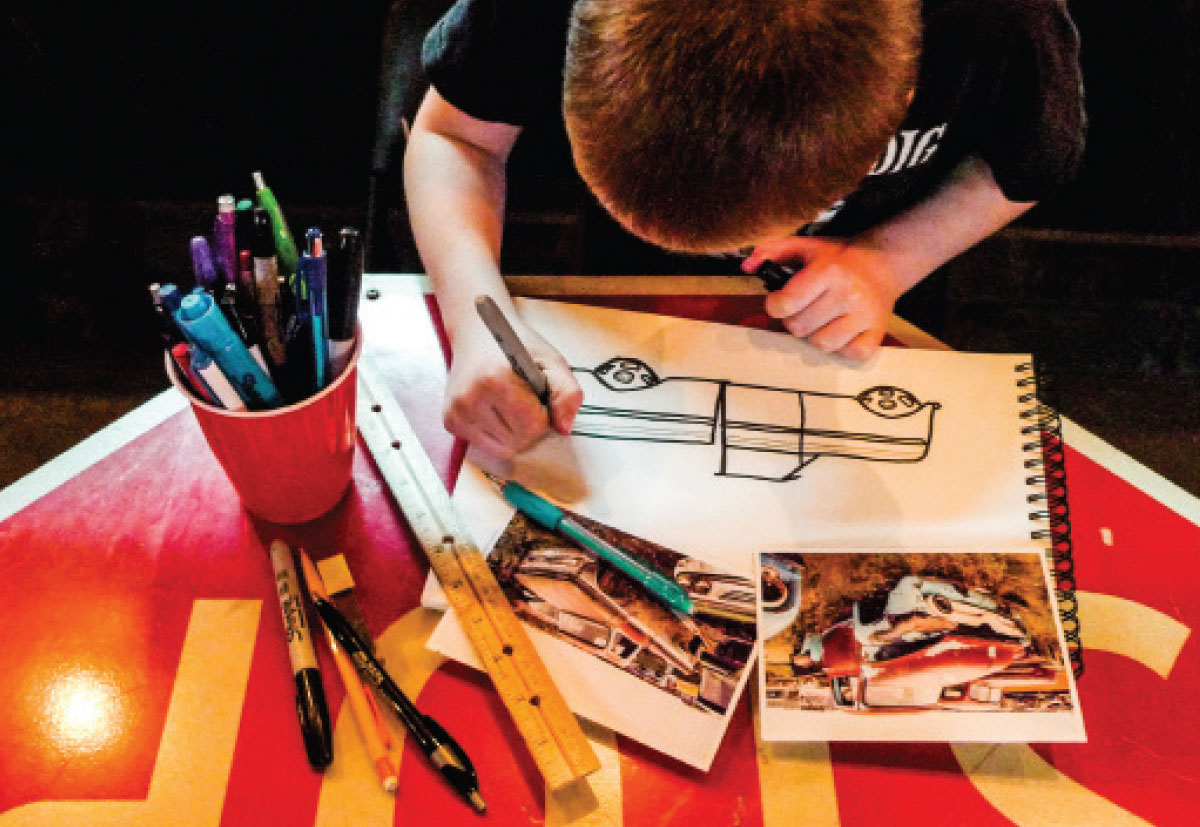



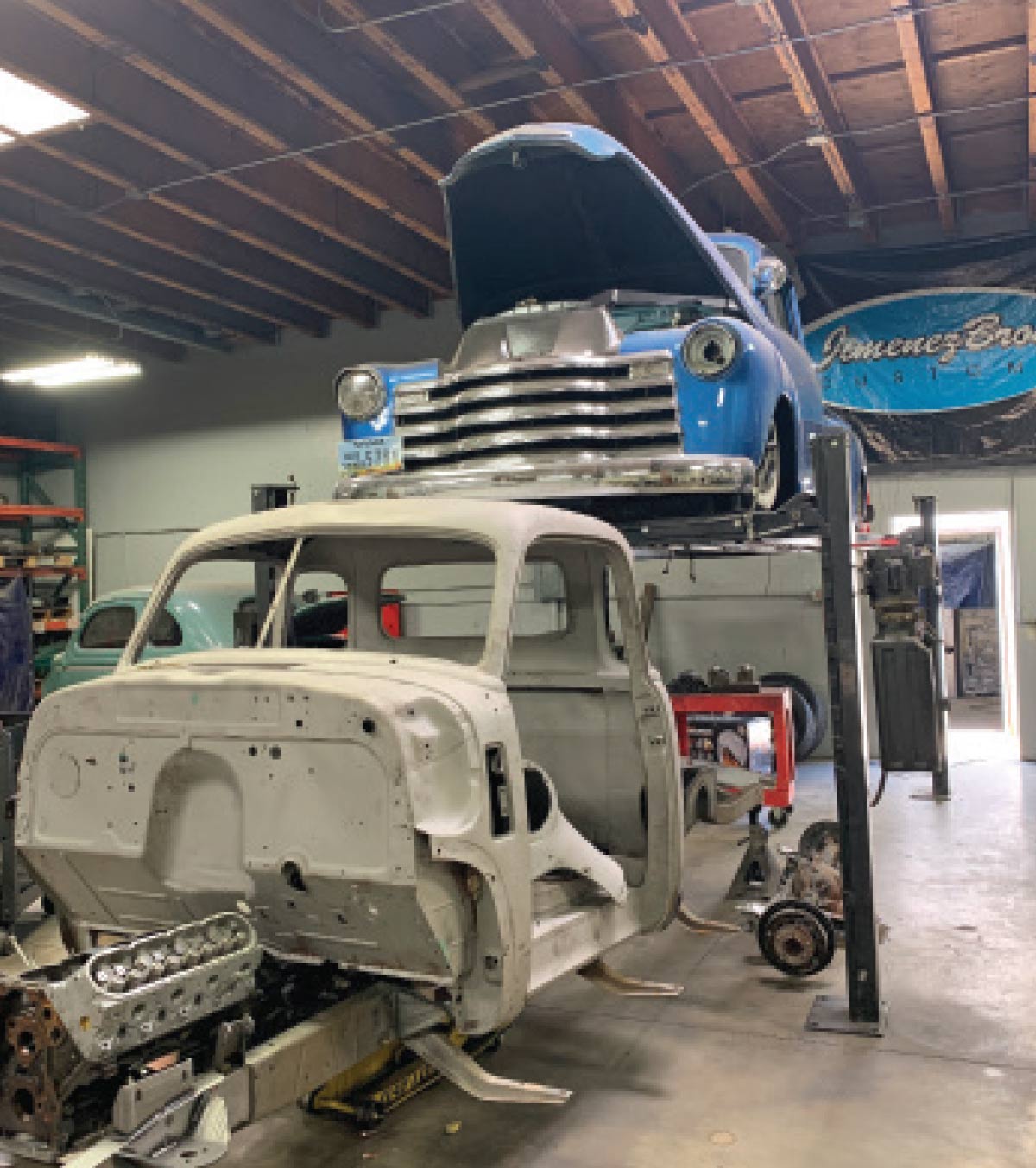




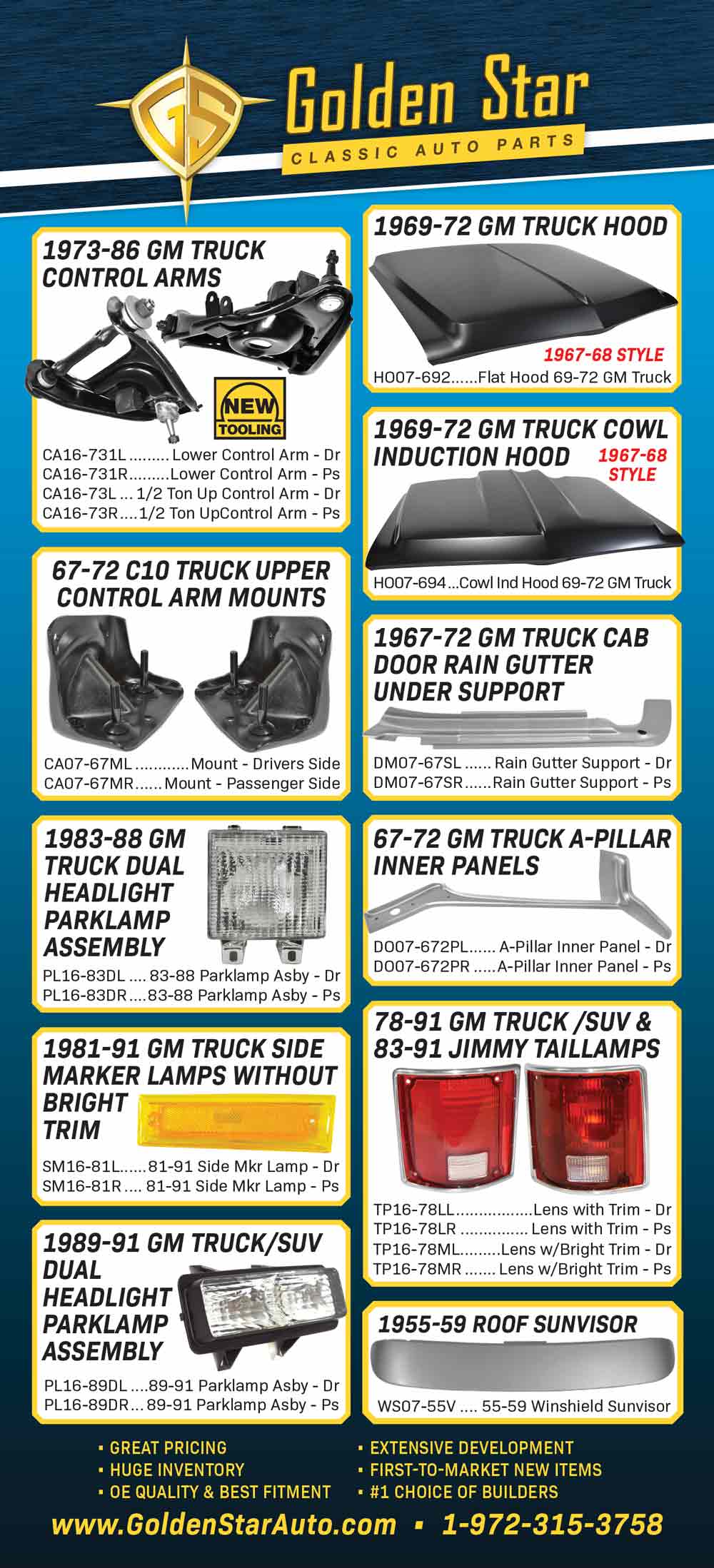



 BY
BY 